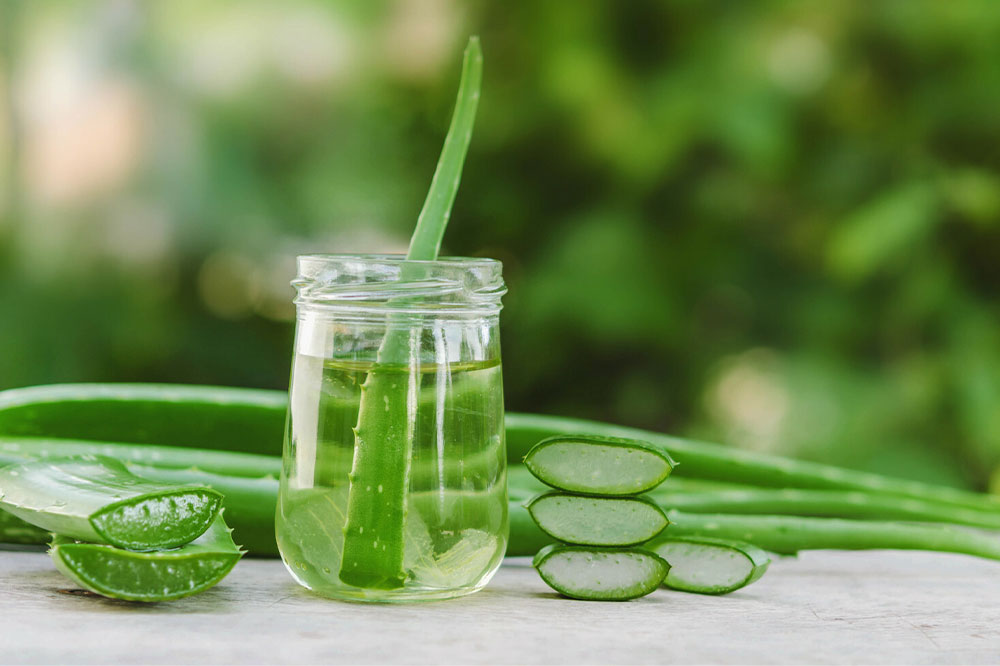Eczema – Warning Signs and Home Remedies

Eczema is a prevalent health condition that causes skin dryness and itchiness. While the symptoms’ severity can vary from person to person, they are generally uncomfortable and frustrating. Health experts recommend various treatments, lifestyle changes, and home remedies to manage flare-ups. This post takes a closer look at the common symptoms that help identify eczema and a few simple home remedies to help patients relieve discomfort and improve their quality of life.
What is eczema?
Eczema, or atopic dermatitis, is a chronic skin condition characterized by dry, itchy, and scaly patches that can appear anywhere on the body. As per estimates, one in ten individuals in our country is said to have some form of the disorder. Health researchers do not know the exact cause of eczema. However, they believe that allergens (like soaps and artificial fragrances), environmental irritants (like dust and pollen), genetics, and psychological stress play a role in its development. Treatment for this ailment often includes creams and moisturizers containing special ingredients and lifestyle changes like avoiding harsh soaps and stress.
Early warning signs of eczema
While eczema is generally a lifelong condition, it can be managed with treatment. Before starting treatment, one must have a confirmed diagnosis. The following are a few signs that help experts identify the disorder:
Itchiness
Itchiness is perhaps the telltale symptom of eczema. It can affect different parts of the body and can vary in severity from person to person. For some, itching can be so intense that it interrupts sleep and interferes with everyday activities. Many treatments and home remedies, such as cool showers and moisturizers, help reduce the itchiness caused by the disorder.
Dry skin
Dry skin is an often overlooked symptom that can be mild or severe. It is usually accompanied by white flakes and raw, cracked, or blistered patches on the skin, which can be painful and itchy. Patients may find their dry skin worsening during colder days when the air is drier and during summer due to increased temperature. To prevent skin drying, one must avoid skincare products with irritants and replace them with gentle moisturizing treatments, such as oils and creams.
Bumps on the skin
This is another highly recognizable early sign of eczema. The bumps can range from small and slightly raised to large and severely itchy. They can also vary in shape and color. Further, the affected areas may become red and sore to the touch, depending on the severity. Sometimes, they may become so sensitive that even contact with clothing causes immense pain. The bumps may go away on their own or linger for weeks or months.
Bumps from eczema are often accompanied by extra dryness in the area and visible skin scaling and cracking. Although this is an uncomfortable and usually painful symptom, treatments can help relieve the discomfort.
Discolored skin
Sometimes, the inflamed eczema-affected patches of skin become darker due to excess pigment production. The discoloration is usually more common in body parts exposed to sunlight, such as the face and hands. People with darker skin complexions may notice gray or blue patches, while those with lighter skin complexions may find their patches taking on a red hue.
Home remedies for eczema
While severe eczema may require treatment, one may manage mild episodes with simple home remedies after consulting an expert:
Apple cider vinegar (ACV)
ACV is a valuable home remedy for various skin conditions, including eczema. It helps remove toxins from the skin and balance its pH levels, which helps prevent flare-ups. Applying an ACV toner or lotion to the affected skin can help soothe itching and inflammation. Patients may also add a small amount of this vinegar to water for a calming bath.
Colloidal oatmeal
Colloidal oatmeal is a wonderful, natural home remedy for eczema. It is a staple in the kitchen pantry and can be easily purchased from stores. Colloidal oatmeal is a powder made from oats ground into tiny particles. Thanks to its skin-soothing properties, it has long been used to calm itchy, inflamed skin.
The best way to use colloidal oatmeal for treating eczema is to add it to bathwater and have an “oatmeal bath.” Its gentle exfoliant properties help soothe the skin by reducing irritation and itchiness while adding vital moisture to prevent dryness and flaking. Colloidal oatmeal can also be converted into a paste or lotion, making it easy to incorporate into any topical skincare regime.
Cool compress
Applying a cool compress to the affected area can reduce itchiness, swelling, and tenderness and provide instant relief. It is a 100% natural home remedy, so even those with sensitive skin may use it when they experience an eczema flare.
To use this relief method, one can dip a cloth or towel in cool water, remove it when damp, and apply it directly to the affected area. The cold temperature has an analgesic effect that soothes inflammation and provides instant relief. Additionally, it helps stop new lesions (abnormal tissues) from forming by preventing the skin from becoming too dry or scaly.
Petroleum jelly
Applying petroleum jelly to the areas affected by eczema can help lock in moisture and soothe the skin. Petroleum jelly forms a barrier against irritants, reducing inflammation and relieving itching. It is an inexpensive and simple remedy that is easy to find in stores.
Besides a remedy for eczema, petroleum jelly is an increasingly popular choice among athletes and gym-goers looking to reduce chafing caused by intense exercise.
Coconut oil
Coconut oil is a popular home remedy for eczema. Its anti-inflammatory and anti-microbial properties make it useful in treating irritation, itching, and inflammation. Coconut oil also offers moisturizing benefits, which can help soothe the skin and relieve redness and dry patches associated with the condition. Further, the oil has antioxidant properties that repair the skin and eliminate free radicals (unstable atoms that can damage other cells).
For best results, one may apply approximately one teaspoon of coconut oil directly to the affected area several times a day until the rash subsides.



